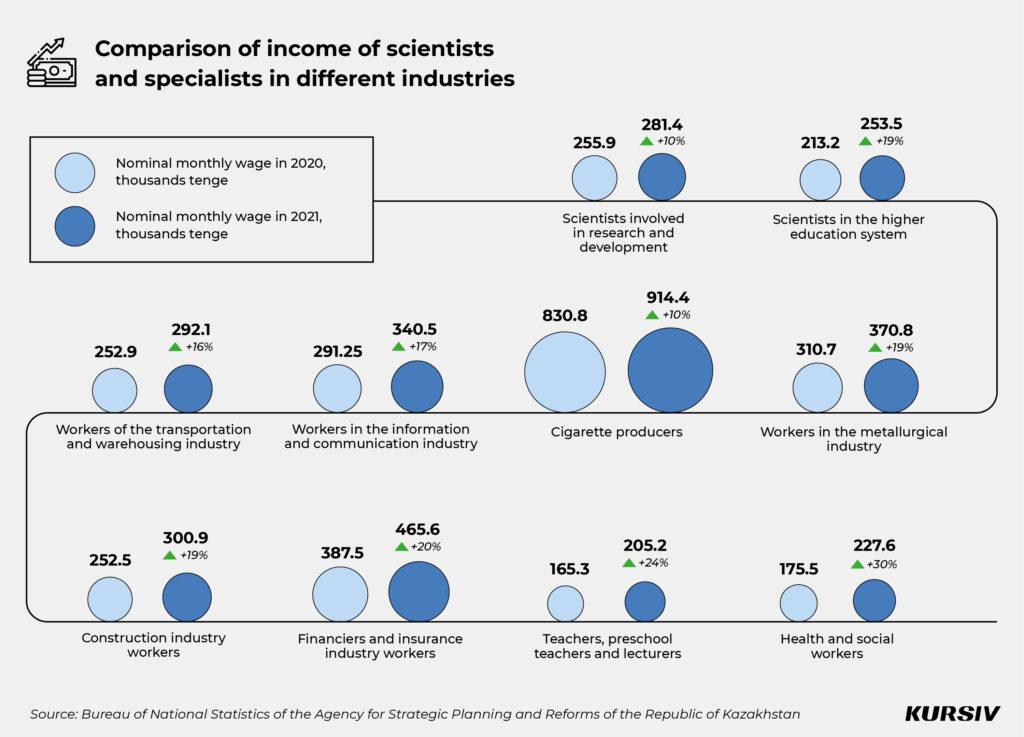Scientists are looking for better jobs in Kazakhstan
Last year, 1,136 scientists and researchers, including 717 associates and full professors, quit different organizations like universities, research institutes and private tech companies where they were involved in research and development. One of the most important factors of that exodus was a low level of income in the research field.
According to the Bureau of National Statistics, there were 21,600 research workers in Kazakhstan last year. This figure is 5% lower than in 2020. As the agency noted, this is the biggest plunge over the past five years.
The data shows that unlike technical staff and others, researchers showed the highest rate of reluctance to work at research and development entities. For instance, there were 18,200 scientists and researchers in the country in 2020. In 2021, this number decreased to 17,100. Most of those who quit were senior specialists with academic degrees, Ph.D. and full professors. About 200 of them have retired while others are still relatively young.
Interestingly, those scientists who quit their jobs in research institutes also quit the academic field completely, according to analyzed staff structure in research institutes, universities and the commercial scientific sector. In other words, it wasn’t just a migration from one research entity to another.
One of the factors that affects the labor market in the field is the level of income. The Bureau of National Statistics data shows that the nominal salary for a researcher in a university was $536.87 on average and $596.28 for specialists involved in research and development.

At first glance, these figures are quite similar to average salaries across the entire country. However, the gap is more obvious when salaries in the research field are compared with salaries in other industries. Data for the last year shows that scientists and researchers made less than those who work in the sectors of logistics, construction and communication. If compared to employees in the financial and insurance sectors, this gap is twofold and threefold compared to workers in the tobacco industry.
In terms of annual salary growth across the country, there were no big differences for scientists working in the higher education system. In 2021 their wages increased by 19%. However, those who have been involved in research and development reported a lower indexation of only 10%.

